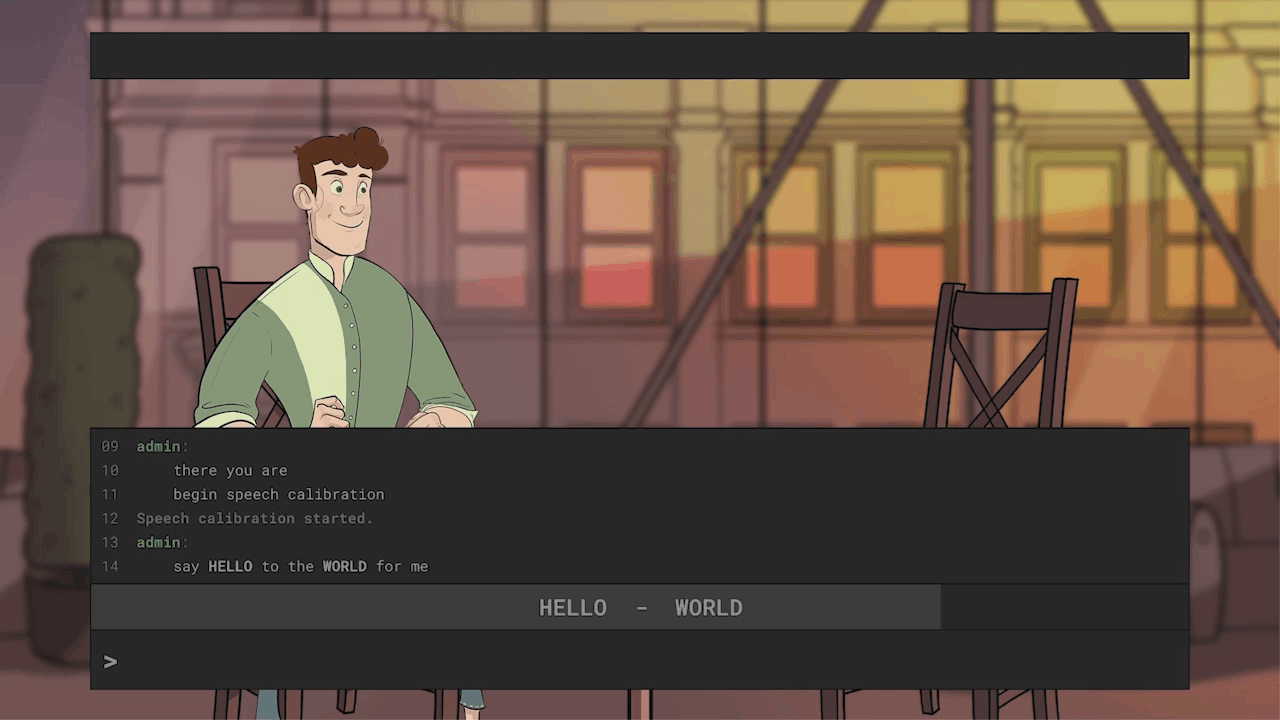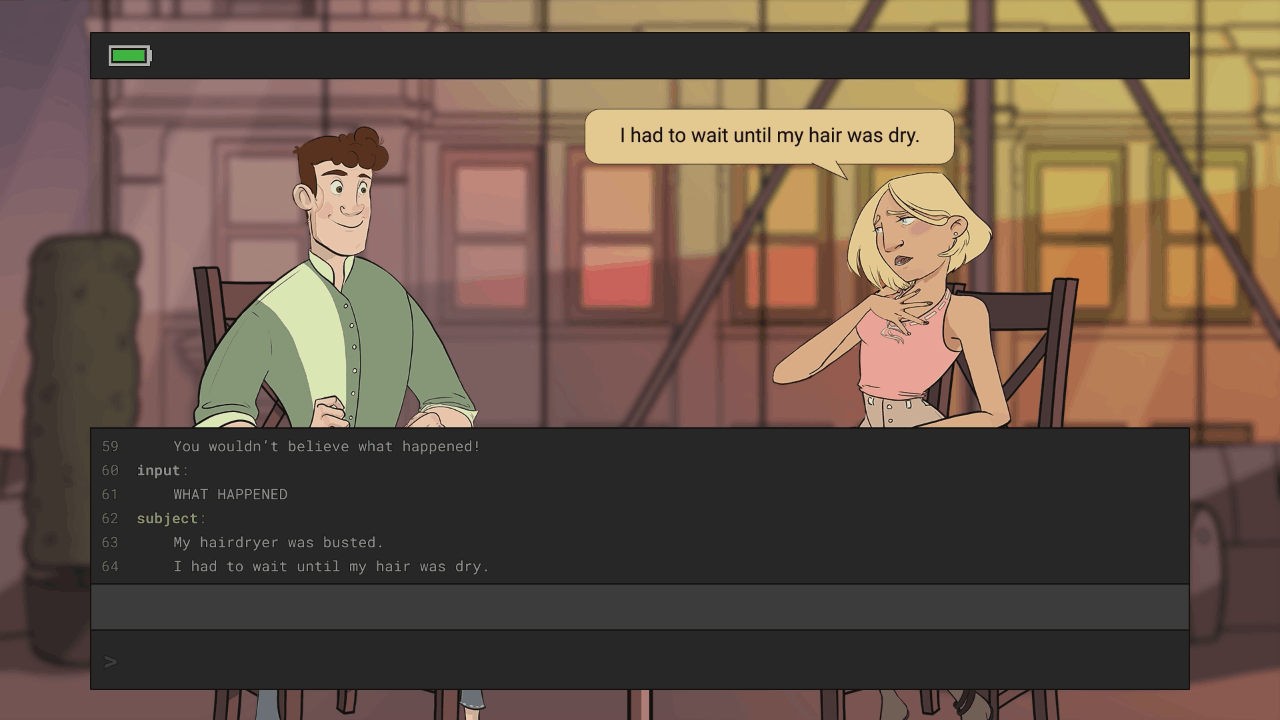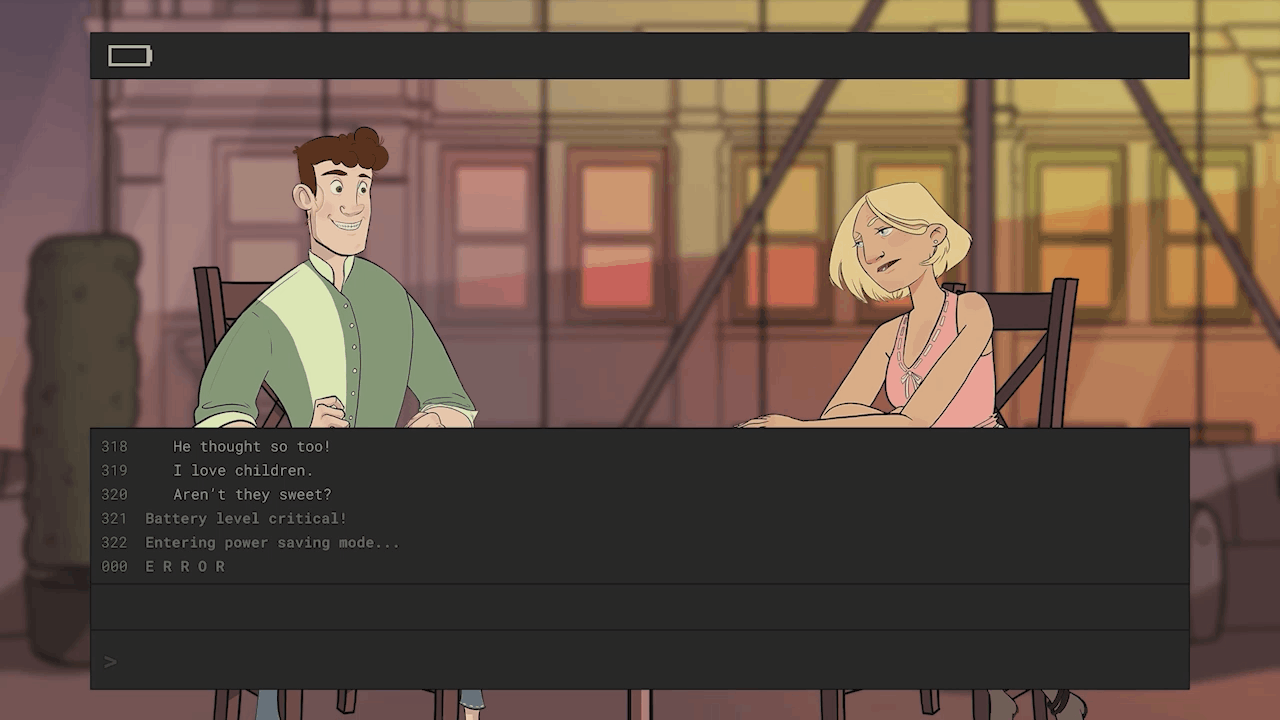


HEART_DRIVE is a story-driven typing game where you play as an android trying to prove itself "human" on a first date.
GENRE: Narrative Typing Game
PLATFORM: PC
ENGINE: Unity
TEAM: 5
DURATION: 12 months
TASKS: Team Lead / Gameplay / Narrative / UI Design
ANDROID ON A DATE
You are the secret property of Heart Drive Inc. sent out on a field test. Follow the directions of your admin, or ignore them.
CREATIVE TYPING
Use the available vocabulary as you like. Type your response fast enough and avoid awkward pauses.
CHOICES, CONSEQUENCES
Do you want to flatter your date or push their patience to limit? The choice is up to you—so are the consequences.
Initially a university project, HEART_DRIVE was accepted into the Cologne Game Incubator—a start-up program funded by the City of Cologne—after a successful business pitch. I was the project lead and designer throughout the development of the demo, taking on many different tasks along the way from setting the game vision to project management and presentations.
GAMEPLAY DESIGN
• Designed, iterated on and documented all gameplay features. — HEART_DRIVE is deliberately minimalistic in its gameplay approach. Gameplay revolves entirely around the typing mechanic which is governed by vocabulary, character and time limitations to make it more interesting.
NARRATIVE DESIGN
• Wrote the game's branching story and character dialogue. — With up to 5 words available to be combined in each turn, the player can input dozens of different responses in any given situation. It was a major challenge to maintain the complexity of the dialogue tree while acknowledging player choices in a believable way.
• Created character animation prototypes to achieve the right comedic timing. — I worked on this before any visual assets were ready, using placeholders where necessary.
SYSTEM DESIGN
• Designed a dialogue system to govern player input and NPC responses. — Achieving HEART_DRIVE's unique to gamifying dialogue was not possible with existing solutions and required developing a specific tool.
UI DESIGN
• Designed and implemented the game's user interface in Photoshop and Unity.
DESIGNING FOR INTRINSIC MOTIVATION
I referred to the three basic psychological needs described in self-determination theory to deliver a satisfying experience in HEART_DRIVE:
Autonomy: You have the agency to decide what to say. Each input will be met with an appropriate response.
Competence: Your creativity is challenged by in-game constraints of word limits. The mastery you achieve in this task will be recognized by the feedback from the admin character.
Relatedness: The admin's frequent remarks and continued investment in your success will bridge your motivations and relatedness.
AVOIDING LUDONARRATIVE DISSONANCE
The first time I got a hold of a computer as an eight year old, my instinct was to type what I wanted to do: “Watch Pokemon”. Typing was the most intuitive way to interact with what I thought was an intelligent machine. The designers of earliest narrative games must have felt the same way considering the prevalence of typing as a gameplay mechanic in the classics of 1970s.
It is no secret that games often struggle bridging gameplay and narrative. To overcome this common challenge, I adopted a bottom-up approach and built the entire premise of HEART_DRIVE around the simple gameplay verb of typing.
Typing gameplay preceded everything else in the project. The protagonist of the game was chosen as an android because the action of typing feels most natural when you are helping a machine formulate a response. The rest of the concept emerged around this strong marriage of gameplay and narrative.
BOLSTERING PLAYER CREATIVITY WITH CONSTRAINTS
Text adventures traditionally allow you to input whatever you want and let the text parser filter out invalid commands. While the idea is powerful, the seemingly unlimited freedom you are given is governed by a very limited set of words. The illusion of freedom dissipates as soon as the game shuts your input down and leaves you disappointed for having mustered your creativity in a blank space.
I embraced the thought "Constraints breed creativity" to gamify the action of typing in HEART_DRIVE. When it is time to speak, your android avatar generates a set of context-sensitive words that can be combined to form responses in any way you like. This limitation of vocabulary bolsters creativity while the ticking timer brings excitement to gameplay.
The limitation of usable vocabulary in the game's branching narrative also increases the game's replayability—as the responses you did or could not type in the last run get stuck in your head, you will be motivated to go back and explore other dialogue paths.
MANAGING THE SCOPE OF NARRATIVE AGENCY
I chose the comedic tone of the game in part to fulfill the grand promise HEART_DRIVE makes: A believable outcome for all responses you may input. Even games offering much less narrative agency falter at this task.
Most games tell dramatic stories where one would expect the consequences of an action to drastically change how the next series events would play out. This makes choices in game narratives so obviously illusionary—after all, it's impossible for a writer to cover every possible story outcome based on hundreds, if not thousands of in-game variables.
HEART_DRIVE, on the other hand, is a situational comedy. Unlike dramas, sitcoms explore consequences to character actions in a safe space. Conflicts arising from character actions are solved in one section or episode of the story. This is not a weakness in storytelling—on the contrary, it is the swift delivery of the punchline that evokes humor. The deliberately obnoxious non-playable character of the game reacts immediately to your input, dropping the punchline before moving onto the next thread of the dialogue—thus achieving a convincing loop of comedic choice & consequence.
No Code Website Builder